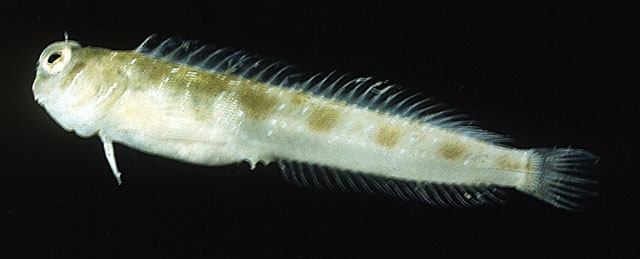| Blenniidae (Combtooth blennies), subfamily: Salariinae |
| 8.3 cm SL (male/unsexed); 5.6 cm SL (female) |
|
reef-associated; marine; depth range 0 - 2 m |
| Western Pacific Ocean: southern Japan to Taiwan, Philippines and Malaysia. |
|
Dorsal spines (total): 12-12; Dorsal soft rays (total): 18-22; Anal spines: 2-2; Anal soft rays: 19-23. Teeth on jaws immovable, fewer than 40 in each jaw. Terminal anal fin ray connected by membrane to caudal peduncle. Nasal and supraorbital cirri simple, nuchal cirri absent. Both sexes with occipital crest. |
| Adults are usually found on the outer reef front of surge channels and pools, exposed to heavy surf. Oviparous. Eggs are demersal and adhesive (Ref. 205), and are attached to the substrate via a filamentous, adhesive pad or pedestal (Ref. 94114). Larvae are planktonic, often found in shallow, coastal waters (Ref. 94114). |
|
Least Concern (LC); Date assessed: 28 March 2009 Ref. (130435)
|
| harmless |
Source and more info: www.fishbase.org. For personal, classroom, and other internal use only. Not for publication.
